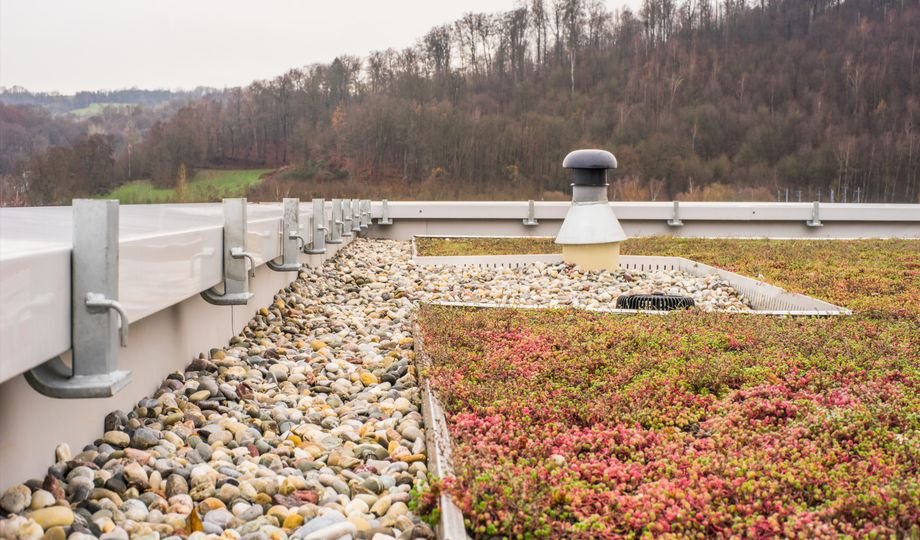
Are you thinking of replacing the roof on your commercial building? Consider a blue roof! While not as well-known as green roofs, they offer many advantages. They’re excellent for stormwater management in urban settings. In particular, their ability to store water during intense storms (which have become more common due to climate change) helps alleviate pressure on city sewer systems. The water is released slowly to help prevent flooding.
The stored water can also be used in different ways: to water gardens, to cool buildings, for domestic use, etc. Blue roofs are a promising sustainable solution for environmental challenges.
Blue roofs were specifically designed to store water (typically stormwater) and gradually release it. While precipitation can easily be absorbed in rural areas, the lack of permeable surfaces in cities can increase risk of flooding. These types of roofs help reduce pressure on municipal stormwater systems and prevent flooding.
While both blue roofs and green roofs help reduce the impact of stormwater on sewer networks during heavy rainfall and prevent flooding, they have some key differences.
Green roofs are an excellent option for stormwater management – they act as sponges, retaining a great deal of water. Plants, as well as their substrate and drainage systems, absorb and retain water naturally. As a result, green roofs reduce the amount of ground-level run-off compared to traditional roofing systems (pipes and gutters).
Blue roofs go further – their purpose is to retain water for as long as possible. A stormwater retention system combined with an excess-flow restrictor prevents water saturation. The water collected can also be used to cool the building, for domestic use, for gardening, and even for recreational purposes.
A combination of green and blue roofs yields the most effective stormwater management system. Water is retained in both the substrate and storage units located underneath it, as well as paved areas. It also provides maximum stormwater collection.
While designs may vary, a typical blue roof is structure includes a waterproof membrane placed on top of the vapour barrier and standard insulation. Above all of this sits a permeable substrate and surface, often a vegetated roof, with an empty space to collect rainwater underneath. Flow restrictors are placed at the main drainage points to control the water collection speed.
Blue roofs can be classified as active or passive depending on the type of controls used to regulate drainage.
Active systems use mechanical means to control the speed at which water flows from a roof. Water collected on the roof can be discharged in several ways, including through hydraulic valves or electronic valves connected to a timer.
In contrast to active systems, which prevent water from collecting in the drainpipes, passive systems temporarily store water on the roof’s surface by extending the path the water must take to reach the evacuation drains. No direct control is needed.
Leave A Reply